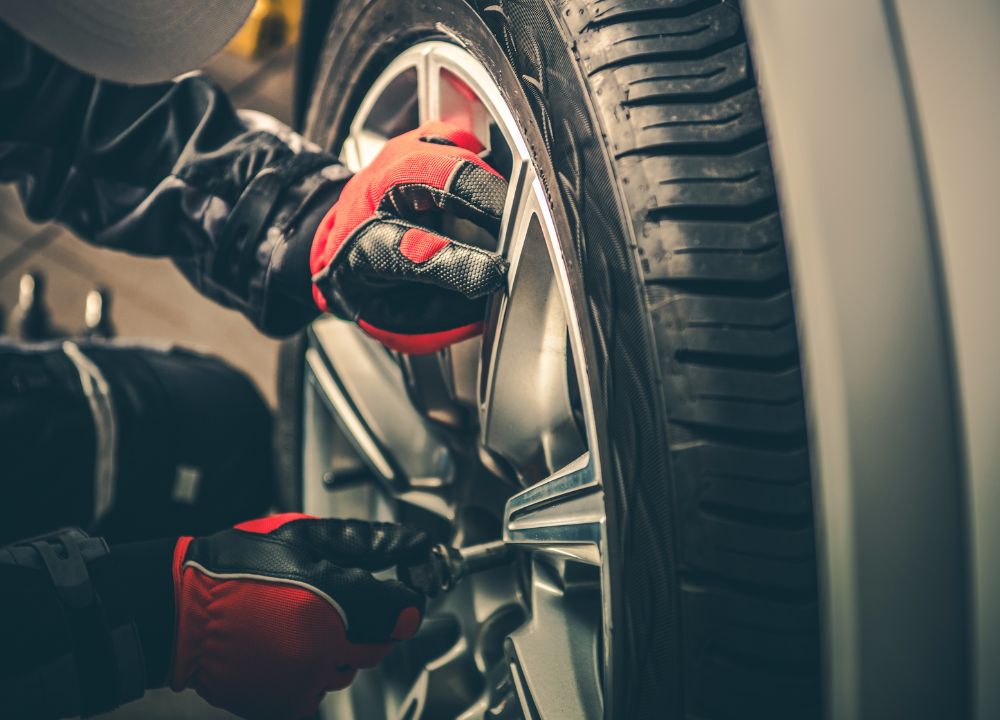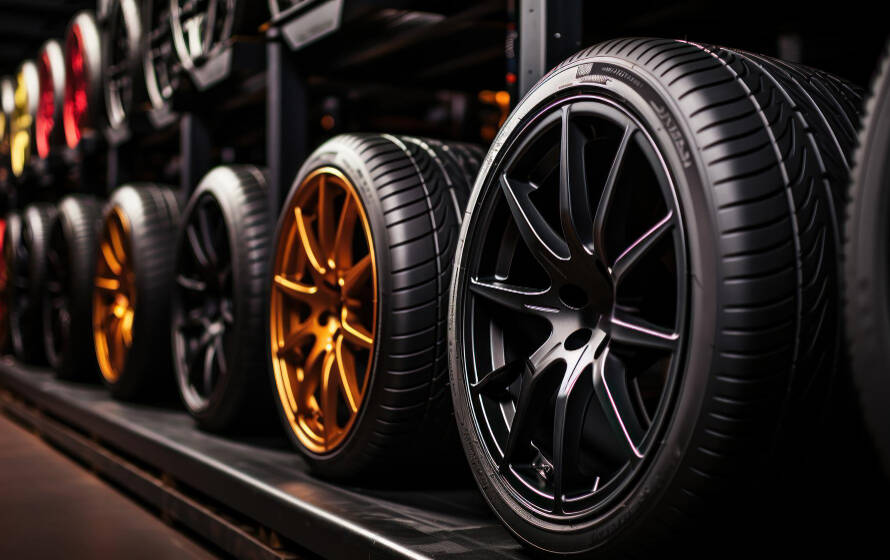Tires are the sole point of contact between your vehicle and the road, playing a critical role in everything from handling and braking to fuel efficiency and ride comfort. When it comes time to replace your tires, you’re often faced with a choice: opt for a set of premium tires from a renowned brand, or save some money by choosing standard or budget-friendly options? The price difference can be substantial, leading many drivers to wonder: are premium tires truly worth the extra cost?
This article delves deep into the world of tires, comparing premium and standard options across key performance indicators, durability, safety, and value to help you make an informed decision.
What Exactly Are Premium Tires?
Premium tires represent the pinnacle of tire technology and manufacturing. Produced by established, world-renowned brands like Michelin, Goodyear, Bridgestone, Continental, and Pirelli, these tires are the result of extensive research, development, and rigorous testing.
Key characteristics often found in premium tires include:
- Advanced Rubber Compounds: Utilizing sophisticated blends of natural and synthetic rubbers, silica, and other polymers to optimize grip, wear resistance, and fuel efficiency.
- Intricate Tread Patterns: Engineered with complex sipes, grooves, and blocks designed to maximize contact with the road surface, evacuate water efficiently, reduce noise, and enhance specific performance characteristics like dry handling or wet braking.
- Reinforced Construction: Incorporating stronger internal structures, including belts and sidewalls, for improved durability, stability, and resistance to damage.
- Cutting-Edge Technology: Often featuring innovations like noise-reducing layers, self-sealing capabilities, or specific designs optimized for electric vehicles (EVs) to improve range and reduce noise.
These tires are frequently fitted as original equipment (OE) on new vehicles, particularly those in the performance or luxury segments, because they are designed to complement the vehicle’s engineering and extract its full potential.
What Defines Standard (or Budget) Tires?
Standard or budget tires, while still meeting minimum safety requirements, are typically manufactured with a focus on cost-effectiveness. They serve the fundamental purpose of providing a safe and legal connection to the road but generally lack the advanced materials, complex designs, and cutting-edge technology found in premium options.
Characteristics of standard tires often include:
- Simpler Rubber Compounds: More basic formulations that may prioritize either longevity or initial grip but often compromise on the balance of performance across different conditions.
- Less Complex Tread Designs: Functional patterns designed primarily for basic water channeling and grip, without the intricate siping or multi-pitch layouts found in premium tires for noise reduction or specialized handling.
- More Basic Construction: While safe, the internal structure may be less robust compared to premium tires, potentially impacting durability and high-speed stability.
- Limited Technology: Generally do not incorporate advanced features like noise cancellation or specialized low-rolling-resistance compounds to the same degree as premium tires.
Budget tires are an accessible option for drivers prioritizing a lower upfront cost and who may have less demanding driving needs.
Detailed Comparison: Where Do Premium Tires Excel?
The real difference between premium and standard tires becomes apparent when examining their performance across various critical factors:
1. Performance (Handling, Grip, Braking):
This is arguably the most significant area where premium tires demonstrate their value.
- Handling and Grip: Premium tires offer superior grip in both dry and wet conditions. Their advanced compounds and tread designs allow for better traction during cornering, acceleration, and evasive maneuvers. This translates to a more responsive and confidence-inspiring driving experience.
- Braking Performance: In emergency situations, stopping distance is paramount. Premium tires consistently outperform standard tires in braking tests, often stopping several feet shorter, especially on wet surfaces. This difference, which can be the length of a car or more, can be the crucial factor in avoiding an accident.
- High-Speed Stability: The robust construction and optimized tread patterns of premium tires contribute to greater stability at higher speeds, providing a more secure and controlled ride.
2. Durability and Lifespan (Treadwear):
While the initial cost is higher, premium tires often boast a longer lifespan and come with higher mileage warranties.
- Treadwear: Premium tire manufacturers invest heavily in developing compounds and tread designs that resist wear more effectively. This means they maintain their performance characteristics for a longer period and need to be replaced less frequently.
- Construction: The stronger construction of premium tires can make them more resistant to deformation and wear caused by everyday driving stresses.
3. Safety:
While all tires sold must meet minimum safety standards, premium tires often provide an enhanced safety margin, particularly in challenging or unexpected conditions.
- Consistency of Performance: Premium tires tend to maintain a higher level of performance, especially grip and braking, as they wear down, compared to some budget tires whose performance can degrade more noticeably with tread loss.
- Aquaplaning Resistance: The advanced groove designs in premium tires are highly effective at channeling water away from the contact patch, significantly reducing the risk of aquaplaning in heavy rain.
4. Ride Comfort and Noise Reduction:
For drivers who prioritize a comfortable and quiet cabin experience, premium tires often deliver noticeable benefits.
- Noise Reduction: Premium manufacturers employ various technologies, such as specially designed tread blocks or noise-absorbing materials within the tire structure, to minimize road noise.
- Ride Comfort: The quality of materials and construction can also influence how well a tire absorbs road imperfections, leading to a smoother and more comfortable ride.
5. Fuel Efficiency:
While perhaps a smaller factor than performance or durability, some premium tires are designed with lower rolling resistance in mind.
- Rolling Resistance: Tires with lower rolling resistance require less energy to turn, which can result in a slight improvement in fuel economy over the life of the tire. Premium manufacturers often prioritize this in certain tire lines.
6. Price:
The most obvious difference is the upfront cost. Premium tires can cost anywhere from 20% to 50% (or even more) than comparable standard or budget tires, depending on the brand, size, and type.
7. Warranty and Support:
Premium tire brands often offer more comprehensive warranties, including higher mileage guarantees and sometimes road hazard protection, providing greater peace of mind.
Analyzing the “Worth It” Question
So, is the extra cost of premium tires justified? The answer isn’t a simple yes or no; it depends heavily on individual circumstances, priorities, and driving habits.
When Premium Tires ARE Likely Worth the Investment:
- Drivers Who Prioritize Safety: If you frequently drive in challenging weather conditions (heavy rain, snow, ice) or on roads where emergency braking or evasive maneuvers might be necessary, the superior grip and shorter stopping distances of premium tires offer a significant safety advantage that can be priceless.
- Performance Vehicle Owners: If you drive a vehicle designed for performance, premium tires are essential to unlock its full potential in terms of handling, grip, and braking. Using budget tires on a high-performance car would be like wearing flip-flops for a marathon.
- Drivers Who Value Comfort and Quietness: If a smooth, quiet ride is important to your driving experience, the noise reduction and comfort features of premium tires can make a noticeable difference, especially on long commutes or road trips.
- High-Mileage Drivers: While the initial cost is higher, the longer tread life of many premium tires can mean they last significantly longer than budget options. When calculating the cost per mile over the tire’s lifespan, the difference might be less dramatic than the initial sticker price suggests, and in some cases, premium tires can even be more cost-effective in the long run.
- Drivers Who Want Predictable and Consistent Performance: Premium tires are engineered for consistent performance throughout their life, providing reliable grip and handling as the tread wears down.
When Standard Tires Might Be Sufficient:
- Drivers with Budget Constraints: If your budget is the primary concern, quality standard tires can provide safe and reliable performance for everyday driving needs.
- Drivers with Lower Annual Mileage: If you don’t drive long distances frequently, the extended lifespan of premium tires might not offer as significant a cost advantage to offset the initial price.
- Primarily City Drivers: For drivers who mainly navigate city streets at lower speeds and rarely face demanding driving conditions, the extreme performance capabilities of premium tires may not be fully utilized.
- Owners of Older Vehicles: On older vehicles with less advanced suspension and braking systems, the full performance benefits of premium tires may not be as pronounced as on modern vehicles.
Factors to Consider Before Making Your Decision
Before purchasing tires, take the following factors into account:
- Your Driving Habits and Style: Are you an aggressive driver, or do you drive conservatively? Do you prioritize spirited handling or a comfortable ride?
- Your Vehicle Type: The type of vehicle you drive (sedan, SUV, sports car, truck) influences the type of tire it needs and how much you will benefit from premium features.
- Your Local Weather Conditions: If you live in an area with significant rain, snow, or ice, the wet and cold weather performance of premium tires becomes much more important.
- Your Budget: Determine how much you are realistically able or willing to spend on tires.
- Your Priorities: Rank what is most important to you in a tire: safety, performance, comfort, longevity, or price?
- Read Reviews for Specific Models: Don’t just compare “premium” versus “standard” in general. Look up reviews and performance tests for specific tire models within both categories that fit your vehicle to see how they compare directly.
The Importance of Tire Maintenance
Regardless of whether you choose premium or standard tires, proper maintenance is crucial for maximizing their lifespan and ensuring optimal performance and safety. This includes:
- Regularly Checking Tire Pressure: Maintaining correct inflation pressure is vital for even wear, optimal grip, and fuel efficiency.
- Routine Tire Rotation: Rotating your tires according to the manufacturer’s recommended schedule helps ensure even treadwear across all four tires.
- Wheel Alignment and Balancing: Proper alignment and balancing prevent uneven wear and vibrations, contributing to a smoother ride and longer tire life.
Conclusion: The Value is in the Verdict
In conclusion, premium tires typically offer superior performance, enhanced safety features, greater durability, and a more comfortable ride compared to standard or budget options. The advanced technology and quality materials used in their construction translate to better grip, shorter braking distances, increased stability, and often a longer lifespan.
However, the higher upfront cost of premium tires is a significant factor. Whether they are “worth it” depends entirely on your individual needs, driving habits, the type of vehicle you own, and your priorities.
If you prioritize maximum safety margins, require high-level performance from your vehicle, value a comfortable and quiet ride, or are a high-mileage driver who can benefit from extended tread life, then investing in premium tires is likely a worthwhile decision. The peace of mind and enhanced driving experience they provide can easily justify the extra cost.
If your driving is primarily confined to urban areas, your annual mileage is low, and budget is your primary concern, well-maintained standard tires can provide perfectly adequate and safe transportation.
Ultimately, the best approach is to evaluate your own specific situation, consider the factors discussed above, and research specific tire models to find the best balance of performance, durability, and cost for your vehicle and your driving needs. Choosing the right tires is a crucial investment in your safety and driving enjoyment.





